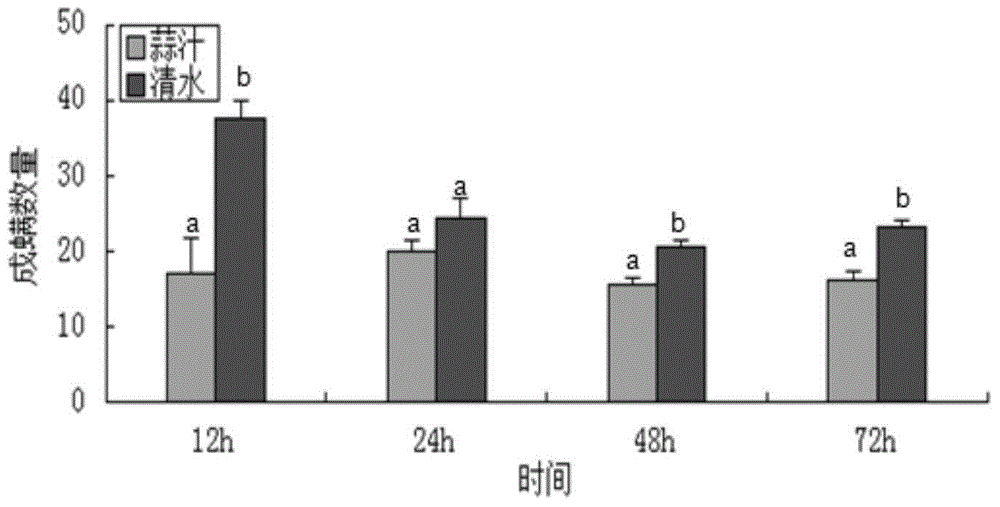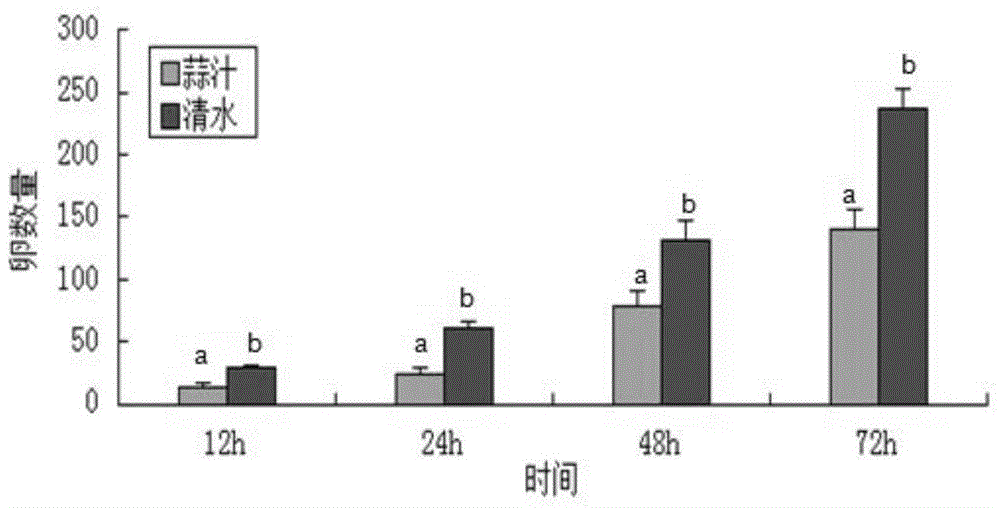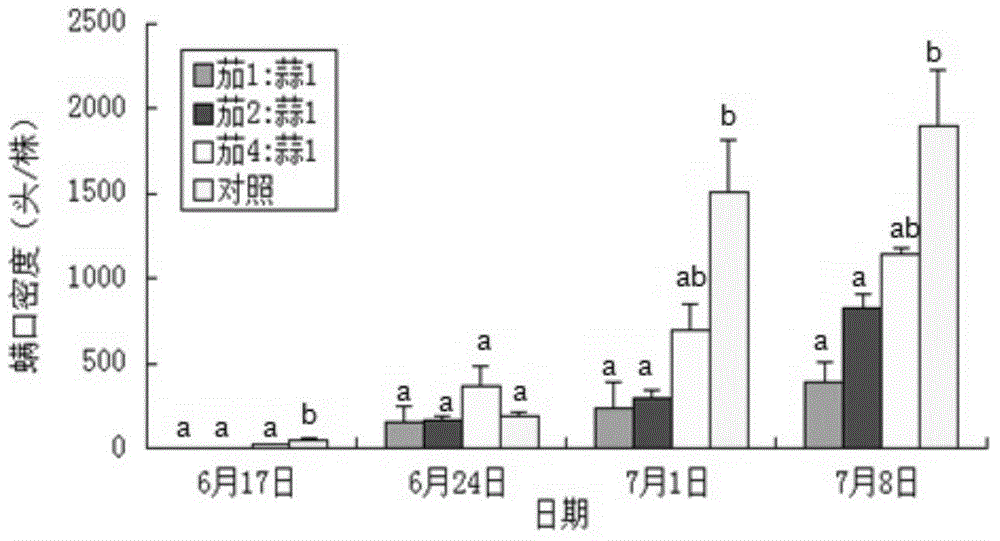Ecological prevention and treatment method for vegetable tetranychidae
A vegetable spider mite and ecological technology, applied in the field of ecological control of vegetable spider mites, can solve the problems of high cost and short timeliness, and achieve the effects of avoiding damage, zero cost, and saving resources
- Summary
- Abstract
- Description
- Claims
- Application Information
AI Technical Summary
Problems solved by technology
Method used
Image
Examples
Embodiment 1
[0031] Example 1 Ovicidal activity of garlic extract on Tetranychus truncates
[0032] Preparation of garlic liquid: Put 25g of peeled garlic cloves into a mortar, grind them, transfer them to a 500ml glass container, add 250ml of distilled water, and store them in an artificial climate box at 25±1°C and 60%RH. , After 24h, filter with gauze and filter paper to get the supernatant, set aside. Set the following three concentrations for the treatment of spider mite eggs. Treatment I: 1ml garlic liquid + 9ml distilled water; treatment II: 5ml garlic liquid + 5ml distilled water; treatment III: 10ml garlic liquid.
[0033] Treatment of spider mite eggs: 5 newly hatched female adult mites of Tetranychus truncation were placed on the peanut leaf butterfly, and the adult mites were removed after 24 hours of laying eggs, leaving only 20 eggs. The leaf butterfly was immersed in the above-mentioned different treatment solutions for 5 seconds, distilled water was used as a blank contro...
Embodiment 2
[0038] Example 2 Determination of Garlic Extract's Repellent Activity to Tetranychus truncates
[0039] With reference to the method of Zhou Qiong et al. (Journal of Applied Ecology, 2003, 14(2): 249-252). The details are as follows: Cut the leaves of bean seedlings with the midrib into discs with a diameter of 8 cm, and keep the leaves on both sides of the midrib symmetrically consistent. Use a brush to smear the leaf surface and back of the leaves on the side of the vein evenly with garlic treatment liquid, and the other side with garlic. Smear the same amount of distilled water as the garlic treatment solution as a control, put it on filter paper after the leaves are dry, and stick it on the 2.5% agar medium; use a brush to gently pick the female adults of Tetranychus truncates on the back of the leaves On the veins, 50-60 heads per leaf, seal the mouth of the dish with plastic wrap, and culture it under constant temperature conditions of 25±1°C, 60-80%RH, photoperiod L:D=1...
Embodiment 3
[0042] Example 3 Effects of Garlic and Eggplant Intercropping on Tetranychus Population
[0043] In the spring plastic greenhouse (land area of about 4 points) located in Shunyi Experimental Farm, Beijing, the eggplant seedlings and garlic seedlings were planted at intervals according to the ratio of 1:1, 2:1, and 4:1, and the interval between treatments was at least 5. The eggplants (2 rows per row) were used as the isolation zone, and the eggplant area was planted alone as the blank control. Both the treatment group and the control group were treated with conventional field agricultural management operations. In mid-June, the investigation on the occurrence of spider mites on eggplants in each treatment was started, and the investigation was conducted once a week, for a total of 4 investigations. 4 points were investigated in each treatment, 10 plants were investigated in each point as a repetition, 4 times in each point, a total of 40 plants were investigated.
[0044] A...
PUM
 Login to View More
Login to View More Abstract
Description
Claims
Application Information
 Login to View More
Login to View More - R&D
- Intellectual Property
- Life Sciences
- Materials
- Tech Scout
- Unparalleled Data Quality
- Higher Quality Content
- 60% Fewer Hallucinations
Browse by: Latest US Patents, China's latest patents, Technical Efficacy Thesaurus, Application Domain, Technology Topic, Popular Technical Reports.
© 2025 PatSnap. All rights reserved.Legal|Privacy policy|Modern Slavery Act Transparency Statement|Sitemap|About US| Contact US: help@patsnap.com



